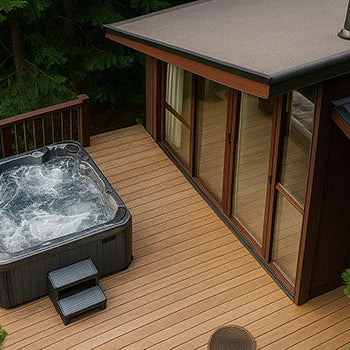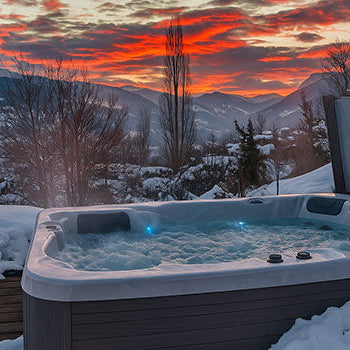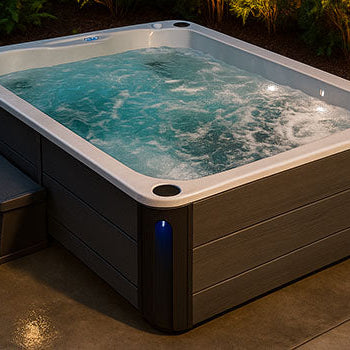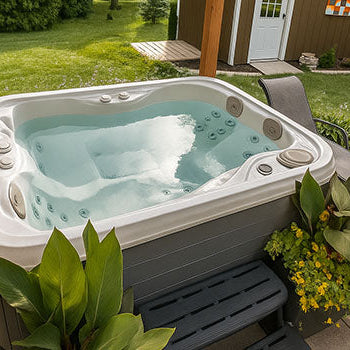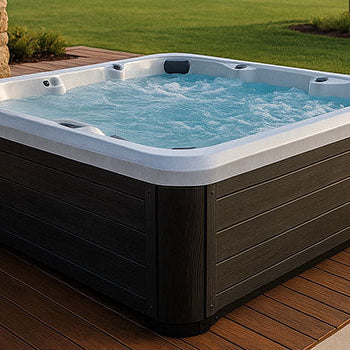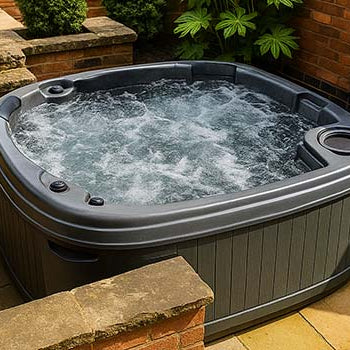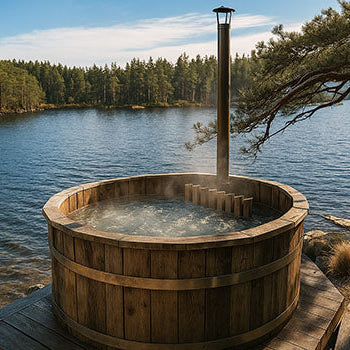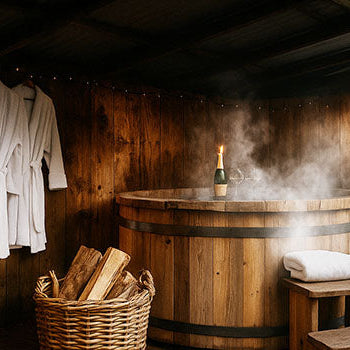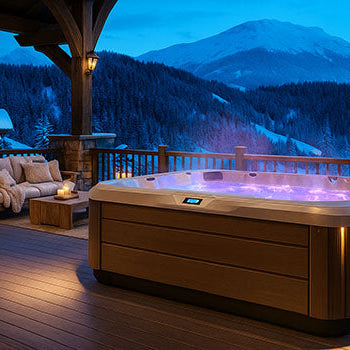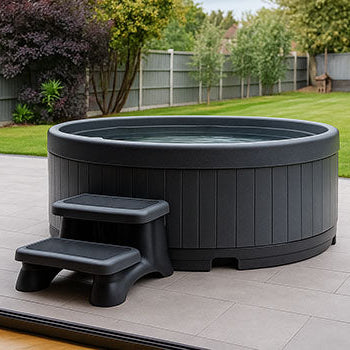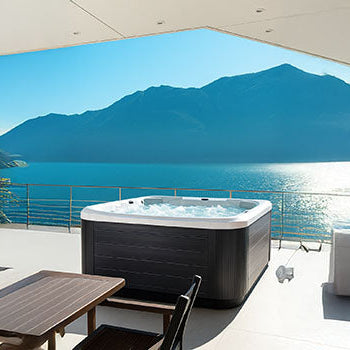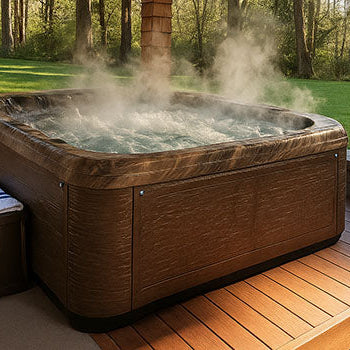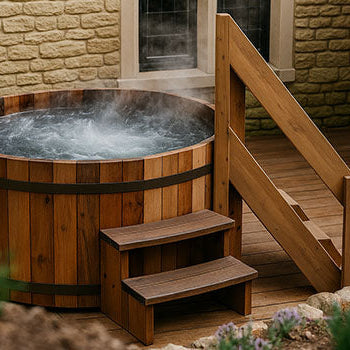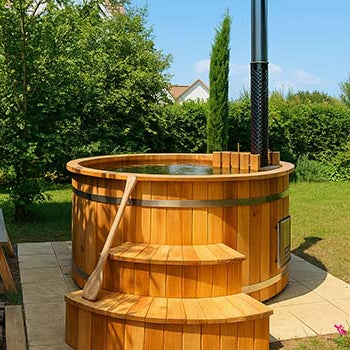Yes, you should shower after a hot tub, unless you're quite fond of stewing in chlorine soup and yesterday’s body oils. It doesn’t matter if you’re stretching out in a smooth Acrylic Hot Tub, chilling in a rustic Wooden one, or climbing into a sturdy Rotomoulded spa, your skin needs a rinse.
Why? Because bacteria, sweat, and chemical leftovers love a warm soak as much as you do.
Keep reading to find out why a quick shower is the real finishing touch to your hot tub ritual.

Why Showering After a Hot Tub Soak is Highly Recommended
Rinsing Off Residual Chemicals (Chlorine, Bromine, Balancers)
Hot tubs use strong sanitising agents like chlorine and bromine to keep the water safe. These chemicals cling to your skin and swimsuit after you get out. If not rinsed off, they can dry out your skin and cause irritation. That tight, dry feeling you sometimes get after soaking? That’s chemical residue. A shower right after use washes it away before it causes discomfort.
Minimising Potential Skin Dryness and Irritation
Hot water alone can strip your skin of natural oils. Combined with harsh chemicals, it’s a recipe for dryness and sensitivity. If you have reactive or dry skin, skipping a shower can lead to itching, redness, or flaking. Rinsing helps restore your skin’s balance, and following up with a moisturiser supports faster recovery. This small habit helps prevent long-term skin damage.
Washing Away Any Lingering Bacteria or Microorganisms
Even clean hot tubs can host bacteria. One common culprit is Pseudomonas aeruginosa, a bacteria that causes hot tub rash. Showering after a soak helps remove any lingering microorganisms from your skin before they have a chance to settle in. This is particularly important when using a shared or public hot tub, where you’re exposed to other people’s germs.
Removing Sweat and Body Oils Released During the Soak
Despite what it may seem, soaking in a hot tub is not the same as getting clean. In fact, the heat often makes you sweat more. That sweat mixes with body oils, lotions, makeup, and other substances sitting on your skin. Without rinsing, all of that sticks to your body even after you’ve dried off. A post-soak shower clears it away and leaves your skin feeling genuinely clean.
Understanding What's in Hot Tub Water
Sanitisers and Their Purpose
Hot tubs need chemical sanitisers to maintain hygiene and kill bacteria. Chlorine and bromine do a great job at keeping the water safe, but they aren’t friendly to your skin. These substances don’t automatically deactivate when you step out, they stay on your body. Rinsing after a soak stops these chemicals from continuing to work on your skin, which can lead to irritation if left alone.
Other Water Balancing Chemicals
Besides chlorine, hot tubs use water balancers like pH adjusters, anti-scale agents, and water softeners. These ensure the water stays safe and comfortable, but they can also irritate your skin if they’re not washed off. Staying in the water too long without rinsing can lead to dryness or unusual skin sensitivities. A quick shower removes these invisible irritants and restores your skin’s comfort.
Potential for Bacteria if Maintenance Slips
Even a well-maintained tub can run into issues. A missed filter clean, improper chemical balance, or high bather load can result in bacteria multiplying in the water. You might not notice any visible signs, but that doesn’t mean your skin isn’t being exposed. Showering after every soak, no matter how clean the tub looks, adds a simple layer of protection that helps prevent issues like rashes or infections.

Benefits of the Post-Hot Tub Shower
Protecting Your Skin's Natural Balance
Your skin has a delicate balance of pH and natural oils that protect it from dryness, irritation, and environmental damage. Hot tub water, even when properly treated, can disrupt this balance. A gentle shower helps reset your skin’s natural state, especially when paired with a mild, hydrating cleanser.
Reducing the Risk of Folliculitis ("Hot Tub Rash")
Hot tub rash is caused by bacteria that infect your hair follicles, leaving you with itchy, red bumps. Showering as soon as you get out of the tub reduces the chance of bacteria taking hold on your skin. This small step can save you from several days of irritation, especially if you’ve just used a public spa.
Feeling Fresher and Cleaner
Soaking in warm, bubbly water may feel relaxing, but it doesn’t replace a proper clean. If you skip the shower, you’re still carrying chlorine, sweat, and skin oils long after you’ve dried off. A short rinse removes all of that and leaves you feeling fresh, not just loosened up. You’ll smell better, too.
What Kind of Shower is Best?
Using Lukewarm Water
Hot tubs already elevate your body temperature. Following up with a hot shower only adds to that heat stress. Lukewarm or cool water is ideal, as it helps close pores, soothe the skin, and reduce redness. It’s a refreshing way to reset your body after the heat.
Using Mild Soap or Body Wash
Avoid strong or heavily fragranced soaps. Opt for gentle, pH-balanced cleansers designed for sensitive skin. These clean effectively without further stripping your skin’s natural moisture or irritating it with harsh additives.
Thoroughly Rinsing Your Body
Don’t rush. Make sure to rinse your entire body, including folds, behind the knees, underarms, and around the hairline if your head went under. Also, rinse your swimsuit before tossing it in the laundry. Removing chemical residue from both your body and clothing is essential for long-term skin health.
Patting Skin Dry Gently
After your shower, gently pat your skin dry with a clean towel. Avoid rough rubbing, which can further irritate already sensitive skin. If you’re prone to dryness or inflammation, this extra care makes a noticeable difference.
Don't Forget to Moisturise
Counteracting the Drying Effects of Heat and Chemicals
Even if you rinse thoroughly, hot tub chemicals and hot water can leave your skin dry. Replenishing lost moisture with a good moisturiser is a must. Look for hydrating ingredients like shea butter, ceramides, or aloe vera, which help restore your skin’s barrier and comfort.
Applying Moisturiser While Skin is Slightly Damp
Timing matters. Apply your moisturiser right after showering, while your skin is still slightly damp. This helps lock in hydration more effectively and prevents water loss, keeping your skin soft and protected. It’s the final, essential step in your post-hot tub routine.
What About Showering Before the Hot Tub?
Importance of Pre-Soak Showering for Water Quality
Showering before using a hot tub is just as important as showering afterwards. Sweat, deodorant, lotions, and makeup all end up in the water if you don’t rinse first. Starting clean helps reduce contamination, keeps the water clearer for longer, and improves the performance of the sanitising chemicals. Clean people mean cleaner water and less frequent maintenance.

Conclusion: Yes, Always Shower After Using a Hot Tub for Health and Hygiene
Skipping a shower after a soak may seem harmless, but you’re leaving behind chemicals, sweat, body oils, and bacteria on your skin. It doesn’t matter whether you’re in a wooden tub in the garden or a luxury acrylic spa indoors, your skin still needs a rinse. A proper shower keeps your skin healthy, reduces the risk of irritation and infection, and ensures your post-soak relaxation doesn’t come with unexpected side effects. Make post-hot tub showers a habit. Your skin, your health, and even your bed sheets will thank you.
